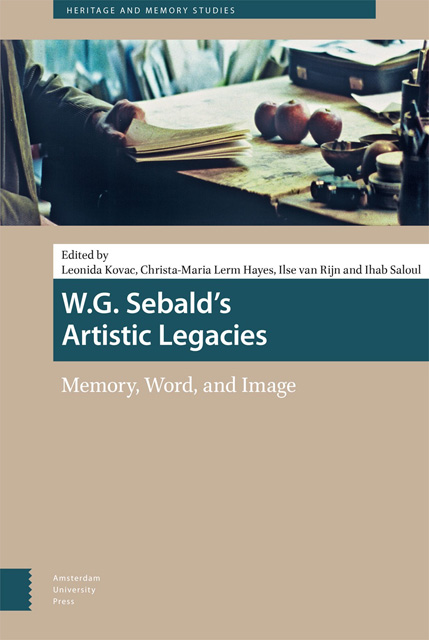7 - Leaning Images: Reading Nasta Rojc and Ana Mušćet
Published online by Cambridge University Press: 26 October 2023
Summary
Abstract
This paper introduces the work of early-twentieth-century artist Nasta Rojc that exists at the periphery of the Croatian art scene. Her extensive diary (Light, Shadows, Darkness, 1918–19) allows us to trace her travels across the Habsburg Monarchy and the Balkans, and to relate them to Sebald’s subjects such as war and biography, whereby his “firm grip” creates room for research on history, feminism, photography, and collage. Rojc’s silenced voice resonates within the work of Ana Mušćet, who used unfixed collage to create numerous intimate statements, temporarily uniting materials and treating them as an opportunity for contact. Instead of photography’s immanent “capturing,” she takes parts of photographs and sketches left behind by Rojc, as well as those appropriated from other sources, arguing that the past, events, and facts do not exist, only interpretation. In The Rings of Saturn, W.G. Sebald’s own particular practice of witnessing includes a description of an office filled with scattered notes, letters and all kinds of written documents, where the author feels as though he is standing in the midst of a paper flood. I bring the weight of the details that the narrator describes into my own interpretation of the complex relationships of a particular female artist, whose journey to Scotland I recently “reconstructed.” “The greater the distance, the clearer the view.” Is it possible to establish a connection in a grain of sand captured by Rojc’s camera without threatening her convincing “I”? The order of things begun with Rojc’s Self-Portrait with a Rifle (1912) continues with the complex intertextual interpretation in the work of Mušćet, as a composition of travelogs, facts, fictions, images, and text. The narrative that connects the work of two artists is marked by a gaze through the crosshairs, one of them painted and the other spoken as a kind of threat. The focus is on leaning images, which make possible the study of the past and the nature of decline and fall, of loss and decay.
Keywords: Multiplicity and Modernization, Unconscious, Archaeology and Landscape, Reminiscent, Monarchy
- Type
- Chapter
- Information
- W. G. Sebald's Artistic LegaciesMemory, Word, and Image, pp. 131 - 150Publisher: Amsterdam University PressPrint publication year: 2023



